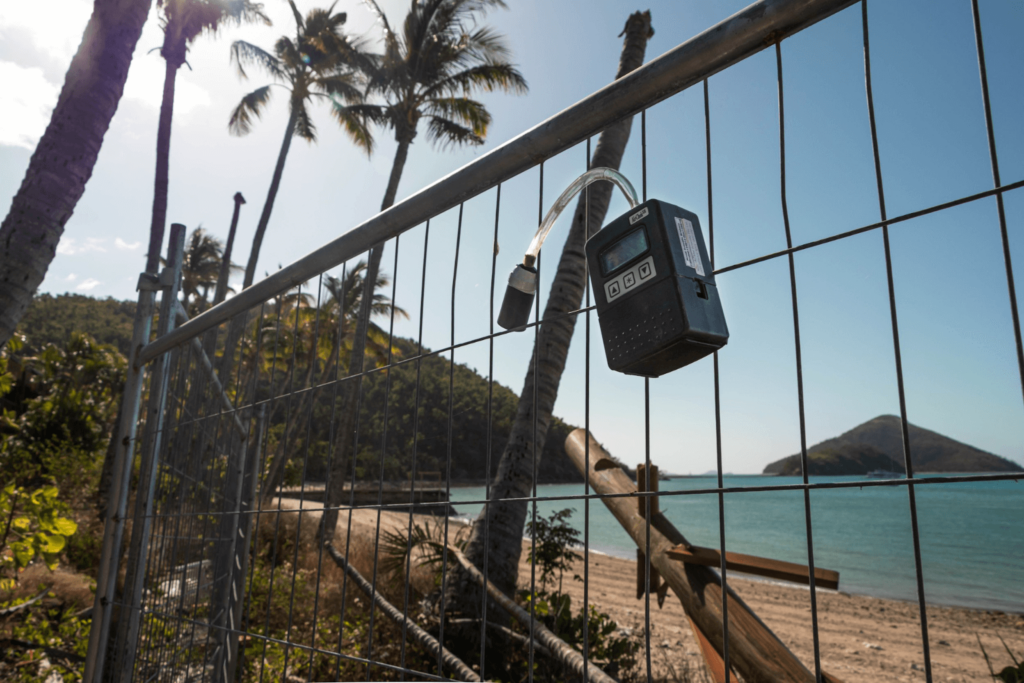
In the realm of occupational health and safety, particularly in Australia, using an asbestos air monitor is a topic of considerable importance. This article explores the specifics of whether an asbestos air monitor needs to be a permanent fixture in various settings, including schools, as per Australian regulations.
Understanding the Role of an Asbestos Air Monitor
An asbestos air monitor is an essential tool for detecting the presence of asbestos fibres in the air. The primary purpose of an asbestos air monitor is to ensure that the air quality remains within safe limits, especially in environments where asbestos-containing materials (ACMs) are present or during asbestos removal activities.
Regulatory Standards for Asbestos Air Monitoring in Australia
In Australia, the guidelines and regulations surrounding using an asbestos air monitor are clear and strict. These regulations are designed to protect workers, residents, and the general public from the harmful effects of asbestos exposure.
When is Asbestos Air Monitoring Required?
The Safe Work Australia guidelines indicate that:

The requirements for air monitoring during asbestos removal vary depending on several factors. These include the type of asbestos, its location and positioning, the use of an enclosure, and whether the removal is taking place inside a building or outdoors.
- Friable Asbestos Removal: Air monitoring is compulsory in all cases of friable asbestos removal. This is essential both before the dismantling of any enclosure and for conducting clearance inspections.
- Removal of Over 10 m² of Non-Friable Asbestos: While air monitoring is not mandatory in this scenario, it’s advisable to consider it. An independent licensed asbestos assessor or a qualified person should conduct it. The purpose is to verify adherence to the obligation to reduce or eliminate airborne asbestos exposure and to ensure that exposure levels do not surpass the standard limits.
- Asbestos Removal in Public Areas: When asbestos removal occurs in or near public spaces, air monitoring should be considered a necessary precaution.
- Exposure Air Monitoring: This type of monitoring is essential in situations where there’s uncertainty about exceeding the exposure standard. It’s based on reasonable grounds, such as a risk assessment by a qualified individual. Given that most asbestos uses are banned, frequent exposure monitoring typically isn’t needed.
Circumstances that may necessitate air monitoring include:
- When it’s unclear if new or existing control measures are effective.
- Evidence suggests control measures have weakened due to inadequate maintenance (e.g., dust deposits found outside an enclosure).
- Changes in work methods or modifications that might negatively impact worker exposure.
- Unplanned disturbances of asbestos at the workplace.
In these situations, air monitoring plays a critical role in ensuring safety and compliance with health standards.
The Need for Permanent Installation of an asbestos air monitoring program
The question of whether a regular asbestos air monitoring program needs to be permanently installed depends on several factors. In workplaces with a known presence of ACMs, or during the removal of asbestos, the use of an asbestos air monitor is not just recommended but often required by law. However, the requirement for a permanent installation varies.
In many cases, the use of an asbestos air monitor is on a need basis. This means the monitor is deployed during specific periods, such as during renovation or demolition activities where asbestos is likely to be disturbed. The asbestos air monitor serves as a safeguard, ensuring that asbestos fibres do not reach dangerous levels.
Asbestos Air Monitoring Around Schools
A crucial area of concern is asbestos air monitoring around schools. Schools, particularly older buildings, may contain asbestos in various forms. In such environments, the health and safety of students and staff are paramount.

The installation of a regular asbestos air monitoring program in schools is guided by the same principles that govern other buildings. While a permanent asbestos air monitor is not always a regulatory requirement, it becomes crucial during periods of construction, renovation, or when any asbestos-containing materials are disturbed.
Schools are advised to conduct regular asbestos audits and risk assessments. If these assessments indicate a potential risk of asbestos exposure, temporarily installing an asbestos air monitor during high-risk periods is a wise precaution.
If asbestos removal is being conducted near a school, asbestos air monitoring during the removal process is generally required.
Best Practices in Using an Asbestos Air Monitor
Best practices in using an asbestos air monitor include regular maintenance and calibration of the device, ensuring that it provides accurate readings. Additionally, it is crucial to have a clear plan and protocol for responding to the readings obtained from the asbestos air monitor.

Air monitoring is essential both before and during the process of Class A asbestos removal. However, this requirement does not apply prior to starting the removal of friable asbestos when employing the glove bag method. It’s mandatory to conduct air monitoring as a part of the clearance process, particularly at the end of the asbestos removal task.
It is the responsibility of the individual or entity commissioning Class A asbestos removal work to ensure that a qualified, independent licensed asbestos assessor performs air monitoring in the area where the asbestos is being removed within the workplace.
Upon receiving the air monitoring results, the licensed asbestos removalist is obligated to respond appropriately based on the level of respirable fibres detected.
More Detailed Information about how to interpret the results of asbestos air monitoring, the documentation process and whom these results must be communicated with can be found by contacting Global Asbestos Audits.
While a regular asbestos air monitoring program is not a universal requirement in Australia, its importance must be recognised, especially in high-risk environments such as schools and construction sites. Regular use and proper maintenance of an asbestos air monitor can significantly mitigate the health risks associated with asbestos exposure.
For more detailed guidance and assistance, consult with Global Asbestos Audits, experts in providing tailored solutions to meet regulatory requirements of asbestos air monitoring and ensure safety.

